How and why Sleeping Giant State Park remains 'paradise'
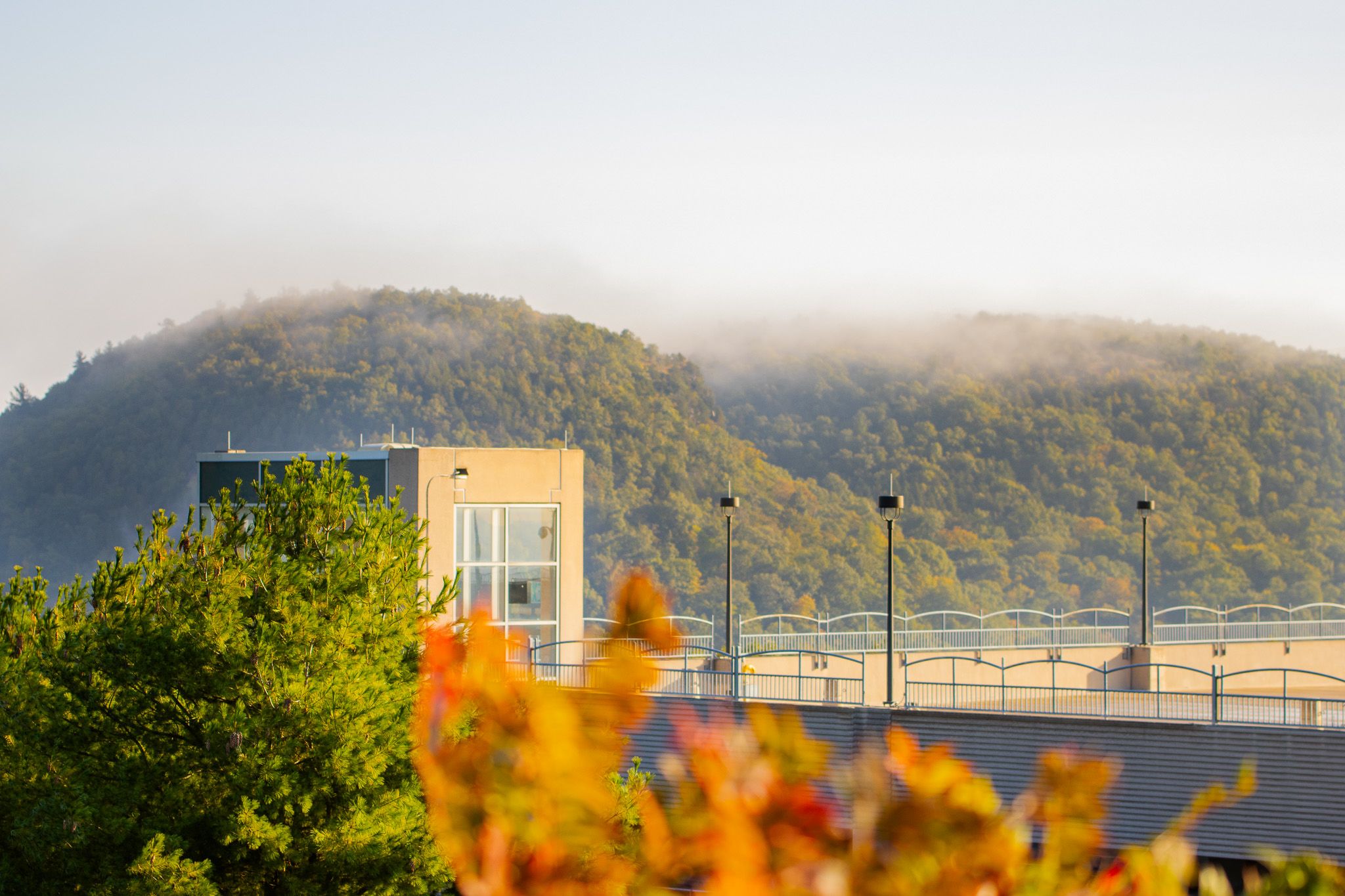

SGPA Trail Maintenance Director Mike Miller plans out the trails each group of volunteers will tend to during a trail maintenance day on Oct. 1, 2023.
SGPA Trail Maintenance Director Mike Miller plans out the trails each group of volunteers will tend to during a trail maintenance day on Oct. 1, 2023.
For a moment, the quiet serenity of the Sleeping Giant State Park is pierced by the sound of a hedge trimmer roaring to life. A weed trimmer follows and the war is on, two men battling against greenery leaking onto the red square trail in the Northwest corner of the park.
One particular plant, euonymus alatus, also known as burning bush, takes center stage in the fight.
“They come in and they take over the whole section of the forest,” Sleeping Giant Park Association trail maintenance director Mike Miller said. “There’s no habitat for wildlife, it doesn’t provide nutrients, it doesn’t give anything back to the ecosystem.
That’s just a part of the trimming duties of the SGPA Trail Crew, today with the instructions to clear “a little bit wider and a little bit taller,” to make space on a trail that doubles as a fire access road.
The original plan this Sunday was to re-blaze trails, but pouring rains earlier in the week forced the crew to pivot.
Instead, a third of the dozen or so volunteers went out to combat future rain, digging and reinforcing waterbars across the trail to prevent erosion.
So the hum of the power tools is joined by the clank of shovels on rock as Doug Matthew, a two-year volunteer from North Haven, and Tom Morse, SGPA recording secretary, get to work.
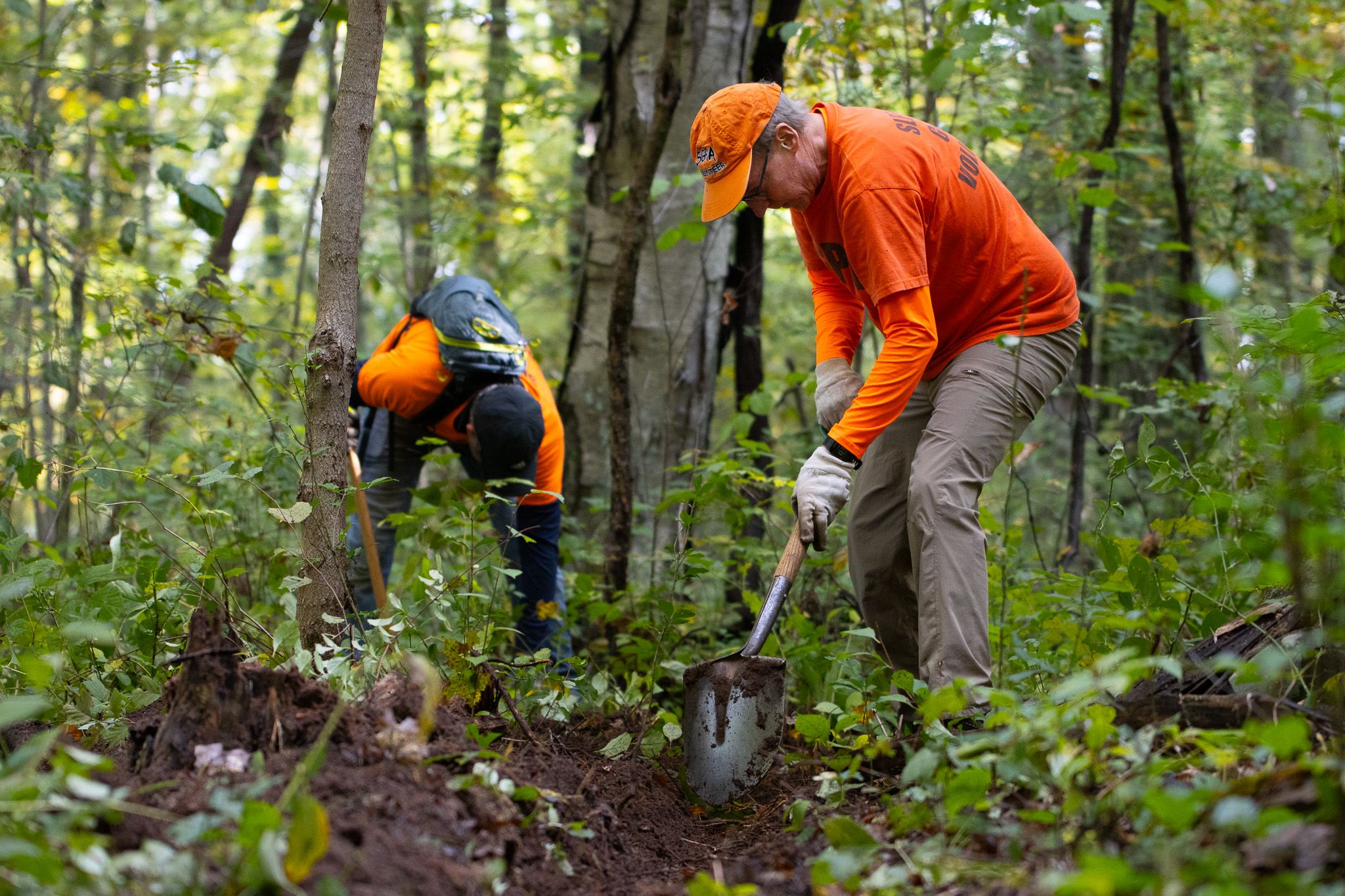
The noise stops for a moment as a pair of hikers stroll by with a golden retriever very interested in the commotion.
“Thank you for all you do,” one says with a smile.
“That’s what makes it all worth it,” Matthew says after they pass. “That one thank you.”
Some portion of this dedicated collective of roughly 60 volunteers give up their morning every Sunday from April to November to tend to the needs of 32 miles of trails. To them, it's less of a chore and more a gift for all the park has given them.
“I’m 50, I hiked here when I was a youth,” Matthew said. “Through high school I used this all the time, my friends and I and we always said ‘oh we should give back, we should give back,’ and then finally there came an opportunity … You used it for free and enjoyed it on many different levels and then there’s a point in your life when you decide to give back, it's better when you can do it at 20 rather than 50.”
Gateway Community College sophomore Nick Judd falls into the former category. The 20-year-old business studies student is in just his second month volunteering with the trail crew, but feels right at home in the park he grew up around.
“I’m a big fan of nature. I think animals are better than people,” Judd said. “There’s just something about nature, I don’t know , it just gets me in a good mood.”
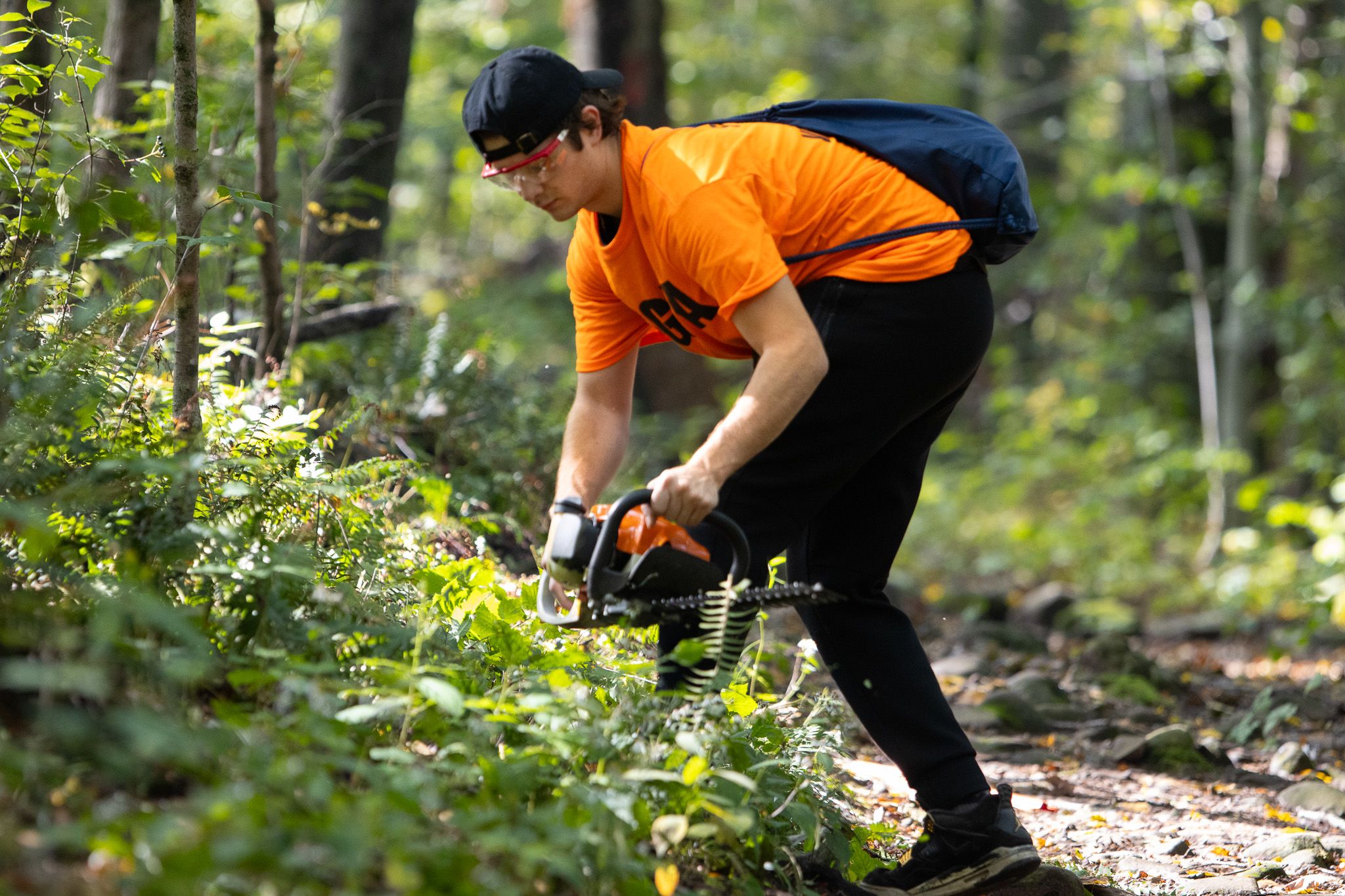
SGPA volunteer Nick Judd, a sophomore business studies student at Gateway Community College, trims back foliage during a trail maintenance day on Oct. 1, 2023.
SGPA volunteer Nick Judd, a sophomore business studies student at Gateway Community College, trims back foliage during a trail maintenance day on Oct. 1, 2023.
It doesn’t matter whether you’ve been clearing the trails for two months or in Miller’s case, 35 years, the mountain binds people together.
“The trail crew, I really do think, is kind of a family,” Miller said.
The SGPA celebrates 100 years in March. The Giant itself has been around for millions more.
This is just one sliver of its existence, a moment in a lifetime too large to comprehend. But little differentiates this moment from the others. The people have changed, as has the world around it. The Giant has too – in just the last century, quarrying reshaped its face and tornadoes its earth. What draws people there has not.
In 1888, Hamden centennial executive committee chairman William P. Blake referred to it as “picturesque beauty.”
In 2023, the word SGPA President Luis Arata chose was “paradise.”
Reasons for visiting often align: an affinity for the outdoors, getting in touch with nature, unplugging from the “real” world. Why people return again and again is more difficult to pin down.
“I don’t know, maybe there is something magical about it,” Arata said.
The Giant is not some untouched piece of wilderness that sees little human intrusion. It lies in the center of the fourth-most populous county in New England, seeing thousands of visitors every year.
Quinnipiac University’s campus sits on its doorstep. There’s 5G service at its highest peaks and in its lowest valleys. The rumble of cars on Whitney Avenue and the Merritt Parkway provides steady white noise to accompany chirping birds and falling acorns. But none of that bothers anyone out on the trails.
“It’s an urban park,” Miller said. “It's surrounded by cities and large population areas, and yet you can still come out here and find enough solitude and space to make it feel like you’re in the middle of Maine, at least for a few minutes. It brings a huge diversity of wildlife and it gives people an opportunity to get out here.”
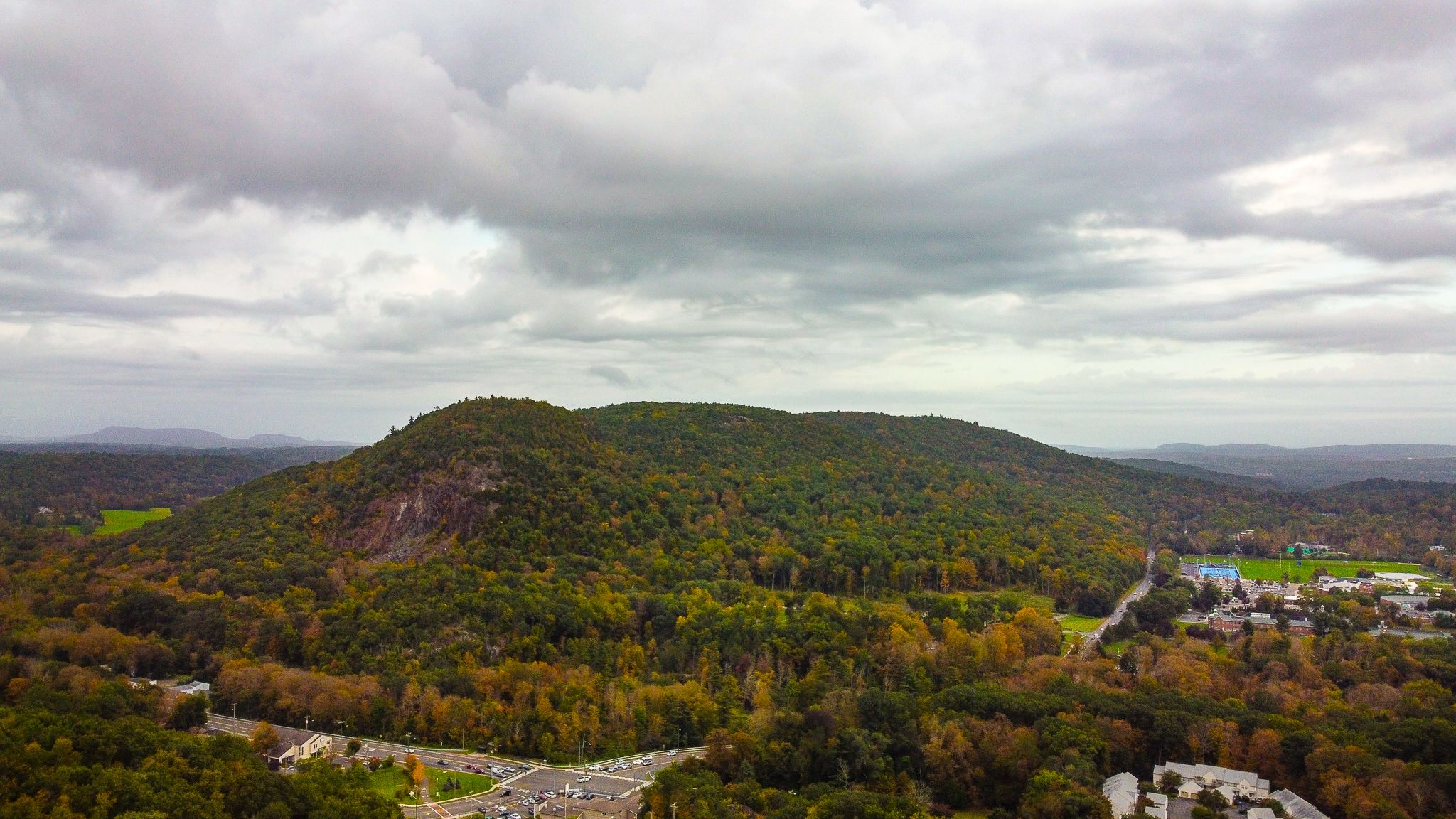
The sheer scale of the 1,650 acre park has allowed it to accommodate a steady rise in hikers as the county’s population more than doubled over the last century.
“There used to be many, many fewer people here when I’d walk, typically we’d see no one,” New Haven resident Virginia Eicher said. “But as Quinnipiac grew there’s more people who use it and I love it. I think it's great. The more people who use it the better.”
Eicher has been hiking the Giant for 40 years for the “mental health opportunities” walking in the woods provide.
Rebecca Baldassarri’s experiences with the park only date back five years, but the benefits she’s experienced are the same.
“I think that it's just a peaceful, natural environment to be in.” Baldassarri, who lives in Cheshire, said. “It’s so important, especially now that everything is digital and people are in front of screens all day.
“We have two young kids ages 2 and 5 and we come here probably three times a month … They just love to climb the tower trail but mostly to go off on the sides and look at the slugs and the worms and touch the moss, so it’s just a great sensory experience for them.”
For traveling nurses Jobic Butao and Javier Ballon, living in Florida gives them little chance to hike. But for the 13 weeks they’re in the Hamden area, the Giant is a spot they plan to frequent.
“In Miami there’s nowhere to hike except trash hills, so when we’re out in the colder areas it's easy, it’s nice to hike,” Butao said. “Having to be in touch with nature was pretty cool.”
It's gone by many names: The Blue Hills, Mount Carmel, but for the last 99 years it's been Sleeping Giant.
Two hundred years ago, its summiters included a party heading west to chase gold in California and surveyor William Haswell, who lived on the mountain for three weeks while working on a coast survey for the U.S. Government.
Today, that group encompasses nurses and professors, students and construction workers — some chasing dreams, others running from problems — all sharing a collective appreciation for a few traprock ridges.
The community around the Giant will continue to expand, as will its understanding of the area's roots. Park officials recently unveiled a sign honoring the indigenous history of the park’s land, which settlers claimed sovereignty over in the 17th century in a deal where the native people were given 11 bolts of cloth and a single coat.
“(Indigenous outreach) used to be zero,” Arata said. “So we hope that this is the beginning of interacting more with indigenous communities that still consider the park sacred ground … it’s not either or. It's the indigenous communities and us.”
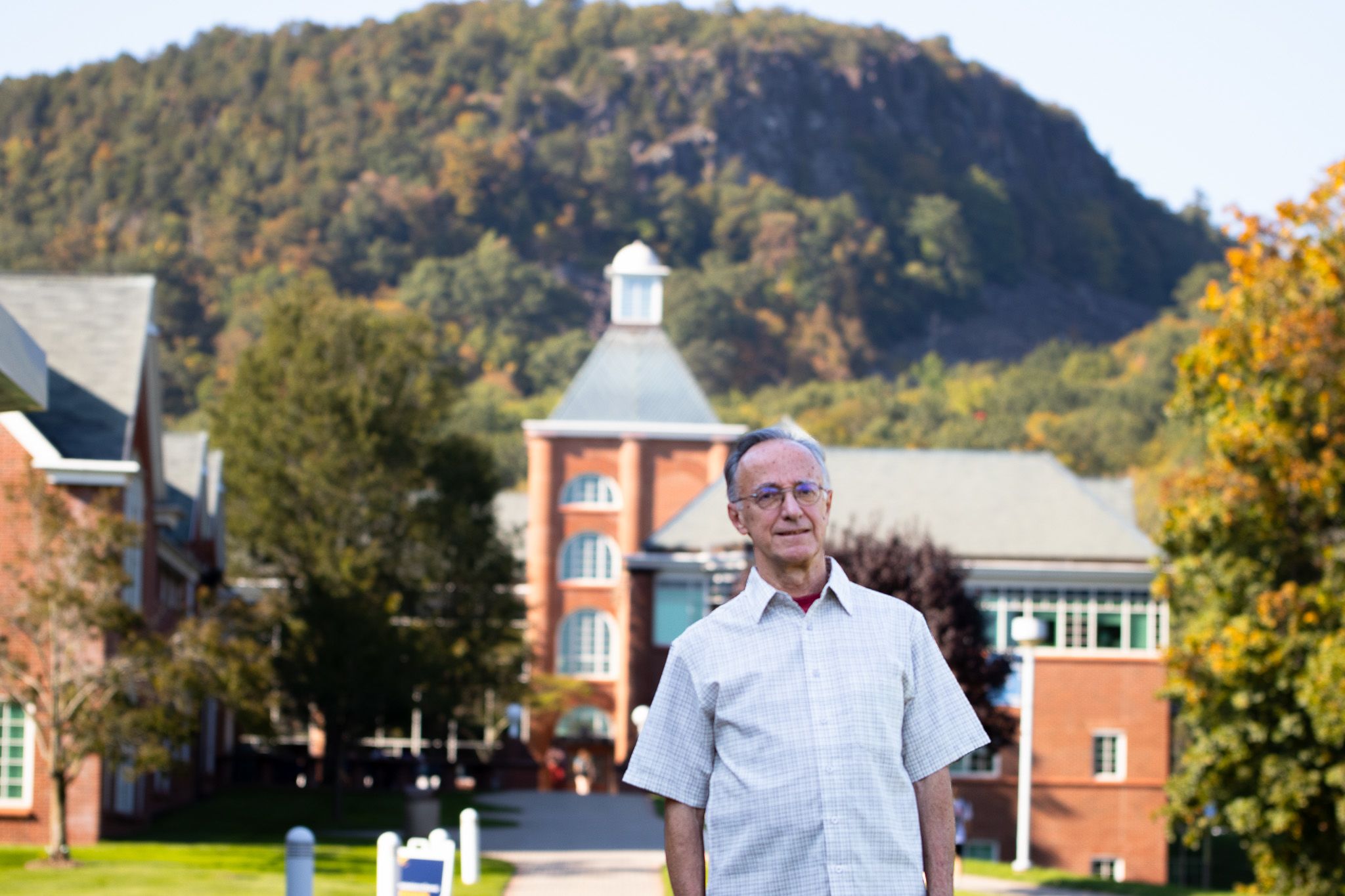
SPGA President Luis Arata stands in the shadow of the Sleeping Giant. An avid trail runner and hiker, Arata also serves as a professor of modern languages at Quinnipiac University.
SPGA President Luis Arata stands in the shadow of the Sleeping Giant. An avid trail runner and hiker, Arata also serves as a professor of modern languages at Quinnipiac University.
For as much as its endless forest and free-flowing streams encourage the mind to stay in the present, those who have poured years of their life into the park can’t help but think of its future. That’s why Miller is heaving a log into a hole across a trail at 10:30 in the morning on a Sunday. And it's why he’ll be there the next weekend — and the next.
“Life right now is all about instant gratification and ‘what’s in it for me,’” Miller said. “If you can kind of look beyond that to ‘what can I do for the long term,’ like today, putting in the water bars, that’s the long term, what can we do for the long term to make this a better place. The people 100 years ago that started the association had that same mindset and it's just nice to continue it.”
100 years from now, there will be a new set of faces maintaining and hiking the trails of the Giant. Any number of natural disasters may have once again altered its appearance. But there will remain two constants: the Sleeping Giant itself, and the people it attracts.
“We do it because we love the Giant. So it comes naturally,” Arata said.
